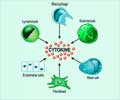Immunity refers to the natural ability of the body to fight against specific diseases. The development of this natural ability is to a certain extent dependent on exposure to agents that cause the disease. On exposure to a pathogen, the body is capable of recognizing it the next time an infection occurs and combat it more effectively than the earlier exposure.
This theory holds good in the development of immunity to asthma as well. Scientists believe that knowing exactly which type of dirt provides the best 'education' for the immune system, could be key to providing new treatments for diseases such as asthma.Researchers explain that a lack of exposure to dirt and common viral infections among children could be behind the rise in the levels of asthma. There has been a considerable rise in the prevalence of diseases like asthma over the past 100 years despite the reduction in childhood infection rates.
This significant rise has been attributed to environmental factors in addition to genetic factors. Scientists have called this the 'hygiene' hypothesis, with a lack of exposure to viruses and other environmental factors meaning children are not able to build up resistance, and can become more susceptible to disease later in life.
It is also believed that having many older siblings, attending day care at an early age, or growing up on a farm can help in promoting resistance to disease. Studies have shown that most common colds can help protect against wheezing in later childhood, and other childhood infections such as chickenpox also provide a level of protection.
Knowing exactly which 'dirt' provides the best education for the immune system, and how to mimic its affects in a cleaner environment, could be the key to reducing the rise in the prevalence of asthma and related diseases according to researchers. With this approach, a lot more can be done to reproduce the protective effects of childhood infections and thereby hold promise of a healthier generation.







